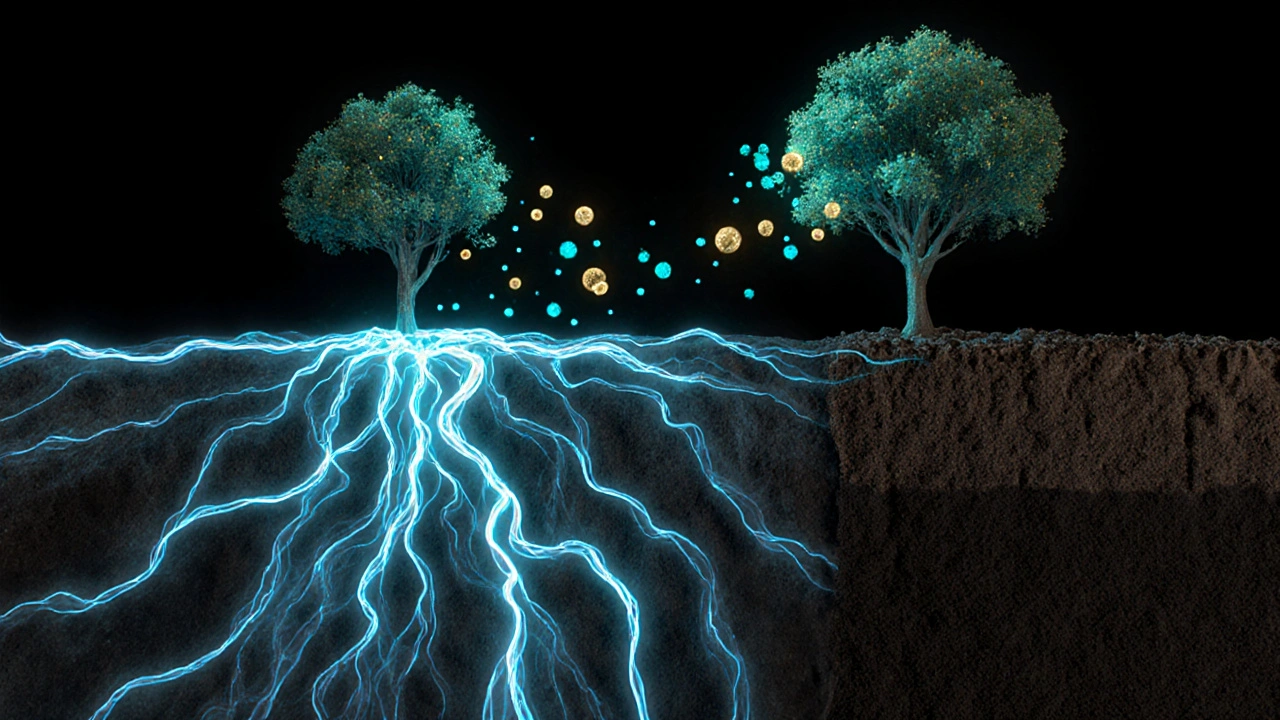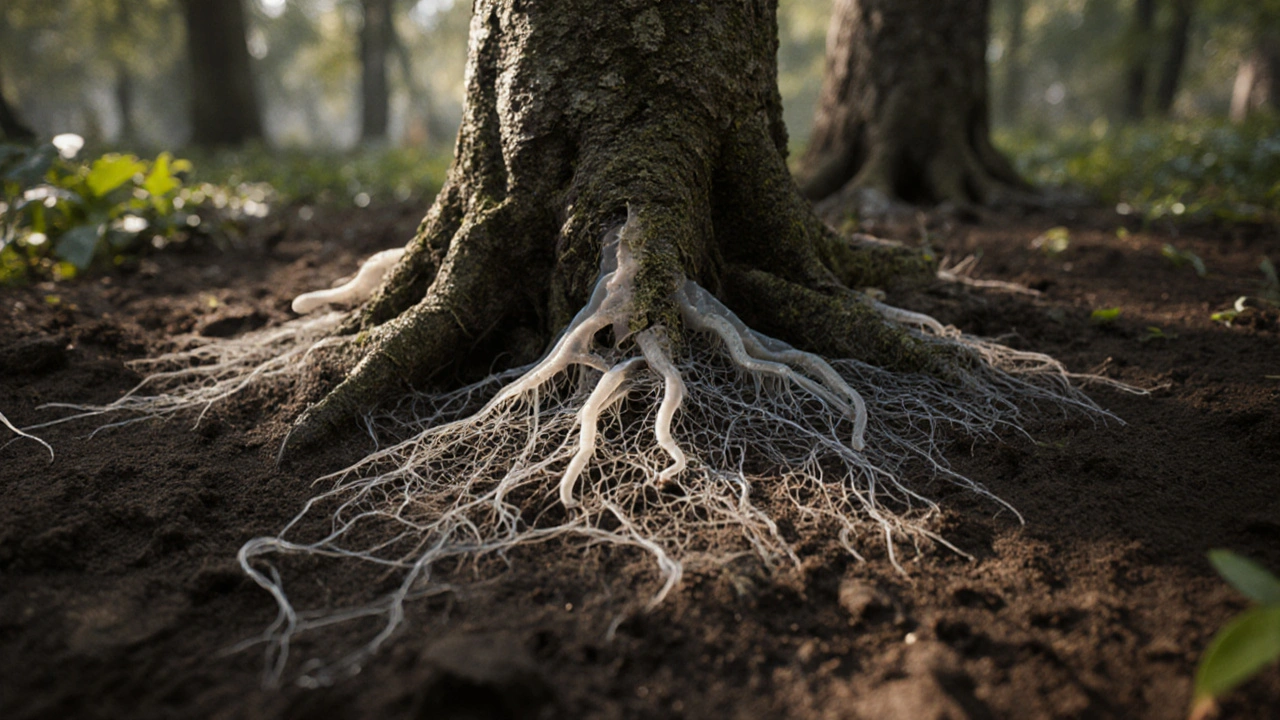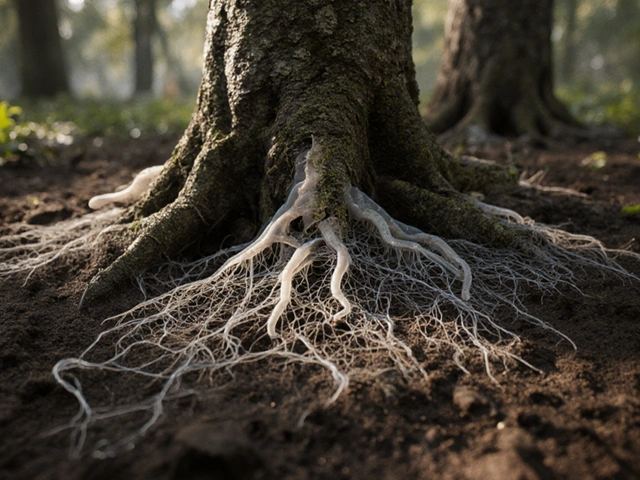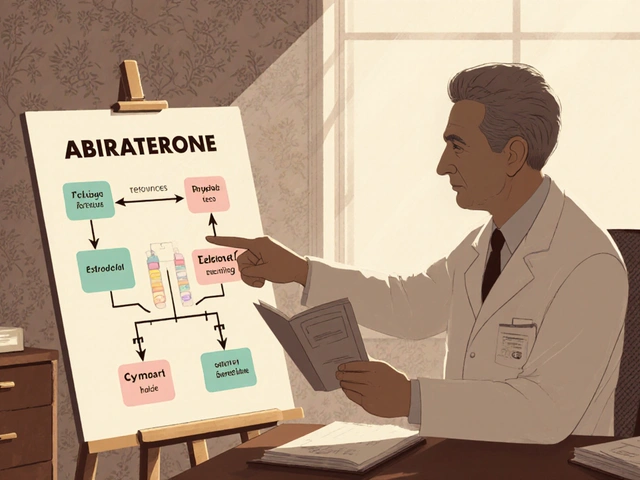Fungal Network Comparison Explorer
Explore the key differences between underground fungal networks and plant root systems:
Fungal Network
Made of hyphae filaments that connect multiple plants across large distances. Facilitates resource sharing and communication.
Plant Root System
Roots of individual plants that primarily absorb water and nutrients for the host plant.
| Feature | Fungal Network | Plant Roots |
|---|---|---|
| Primary Function | Resource exchange and soil aggregation | Water and nutrient uptake for the host plant |
| Reach | Can span several hundred meters across multiple hosts | Usually confined to the host’s immediate root zone |
| Speed of Growth | Rapid colonization; can extend centimeters per day | Slower; dependent on plant growth cycles |
| Response to Stress | Electrical and chemical signaling to alert partners | Hormonal signaling limited to the individual plant |
| Impact on Carbon Storage | Locks carbon in soil organic matter for decades | Stores carbon mainly in woody tissue aboveground |
Key Takeaway
Fungal networks act as a forest-wide communication and resource-sharing system, extending far beyond individual plants. While roots serve the immediate needs of their host, mycelium connects entire ecosystems, enhancing resilience and carbon storage.
TL;DR
- Underground fungal networks (mycelium) link trees, microbes and soil across acres.
- These networks trade nutrients, boost forest resilience, and lock away carbon.
- They influence plant health, soil structure, and even climate mitigation.
- Scientists can map them with DNA sequencing, electrical sensing, and imaging.
- Gardeners can foster them by reducing tillage, adding mulch, and planting diverse species.
Imagine stepping into a forest and seeing nothing but trunks and leaf litter, yet beneath your feet lies a hidden superhighway. That superhighway is the underground fungal network, also called a mycelial network, that stretches through soil, connecting trees, shrubs, and microbes in a silent exchange of resources. Scientists are only beginning to grasp how this "wood wide web" reshapes ecosystems, agriculture, and even climate forecasts.
What exactly is an underground fungal network?
At its core, an mycelium is the vegetative part of a fungus, composed of microscopic filaments called hyphae. These hyphae branch out in all directions, forming a dense mesh that can span hundreds of meters. When many hyphae from the same fungal organism intertwine, they create a underground fungal network that acts like an information and nutrient highway.
Unlike roots, which belong to plants, mycelium belongs to fungi, a kingdom that includes mushrooms, molds, and yeasts. While a mushroom is the fruiting body we see above ground, the real work happens below ground in the mycelial web.
How the network works: the science of fungal connections
Mycelium uses three main mechanisms to link organisms:
- Nutrient exchange: Hyphae absorb sugars, nitrogen, phosphorus, and water from the soil and from plant roots.
- Electrical signaling: Fungi generate low‑level electrical pulses that travel through the hyphal strands, coordinating growth and defense.
- Chemical signaling: Volatile organic compounds and hormones travel along the network, warning partners of stress or disease.
These processes create a feedback loop: a tree supplies carbon (in the form of sugars) to the fungus, and the fungus returns nitrogen and phosphorus. This mutual aid is called symbiosis, specifically mycorrhizal symbiosis when it involves plant roots.
Why trees love fungal friends
Research from a 2023 forest study showed that trees connected to mycelial networks grew up to 30% faster during drought years. The network buffers stress by redistributing water from wetter to drier zones, a process sometimes called "hydraulic redistribution." Moreover, because fungi can break down complex organic matter, they release nutrients that would otherwise stay locked in dead leaves.
In a classic experiment, researchers cut the mycelial connections between two pine saplings. The isolated sapling exhibited a 15% decline in needle chlorophyll, while the connected sibling maintained healthy growth. This illustrates the direct impact of fungal connectivity on plant vigor.
Soil health and the carbon cycle
Beyond plant nutrition, mycelium plays a massive role in the carbon cycle. By converting organic carbon into stable forms of soil organic matter, fungi sequester carbon for decades or even centuries. A 2022 meta‑analysis estimated that temperate forests store up to 2.5 gigatons of carbon in fungal biomass alone.
The network also stabilizes soil structure. Hyphal threads act as biological glue, binding soil particles into aggregates that improve water infiltration and reduce erosion. In degraded agricultural lands, inoculating soil with mycorrhizal fungi can raise aggregate stability by 40% within a single growing season.

Human implications: agriculture, medicine, and climate
Farmers are tapping into fungal networks to cut fertilizer use. By planting mycorrhizal‑compatible crops (like wheat, corn, and many legumes) and avoiding excessive tillage, they let native fungi do the heavy lifting. Trials in the Midwest showed a 20% reduction in nitrogen fertilizer without yield loss.
In medicine, fungal metabolites discovered from underground mycelia have led to new antibiotics and immunosuppressants. The "penicillin" story started with a mold, and modern drug pipelines still screen soil fungi for bioactive compounds.
From a climate perspective, preserving or restoring mycelial networks in forests could become a natural carbon offset strategy. Land‑management policies that protect old‑growth stands indirectly safeguard the fungal reservoirs they host.
Myths and misconceptions
Many people think mushrooms are the only important part of fungi, but the mycelium holds 80-90% of the organism's biomass. Another common myth is that all fungi are harmful; in reality, over 90% of forest fungi are beneficial symbionts.
It's also easy to assume that fungal networks are static, yet they constantly remodel themselves in response to soil moisture, temperature, and nutrient pulses-much like a living internet.
How to observe and support these hidden highways
Directly seeing mycelium is tough without a microscope, but you can infer its presence:
- Look for "fairy rings"-circular patterns of mushroom growth that mark the edge of an expanding mycelial colony.
- Check soil texture; a crumbly, dark soil often indicates active hyphal networks.
- Use DNA metabarcoding kits (available for home gardeners) to detect fungal DNA in a soil sample.
To nurture the network, follow these simple steps:
- Minimize tillage-disturbing soil breaks hyphal strands.
- Add organic mulch or compost; fungi love carbon‑rich inputs.
- Plant diverse species, especially native trees and shrubs that form mycorrhizal relationships.
- Avoid high‑phosphorus fertilizers; excess phosphorus suppresses mycorrhizal colonization.
Fungal network vs. plant root system: a quick comparison
| Feature | Underground fungal network | Plant root system |
|---|---|---|
| Primary function | Resource exchange and soil aggregation | Water and nutrient uptake for the host plant |
| Reach | Can span several hundred meters across multiple hosts | Usually confined to the host’s immediate root zone |
| Speed of growth | Rapid colonization; can extend centimeters per day | Slower; dependent on plant growth cycles |
| Response to stress | Electrical and chemical signaling to alert partners | Hormonal signaling limited to the individual plant |
| Impact on carbon storage | Locks carbon in soil organic matter for decades | Stores carbon mainly in woody tissue aboveground |
Future directions: research frontiers and technology
Scientists are deploying next‑generation sequencing to map fungal biodiversity at the landscape scale. Portable electrical sensors are being tested to record hyphal pulse activity in real time, offering a potential early‑warning system for forest health. Meanwhile, bioengineers are experimenting with "mycelium‑based building materials" that could replace concrete, further linking fungal stewardship to sustainable development.
Frequently Asked Questions
How do underground fungal networks differ from regular roots?
Fungal networks are made of hyphae, not plant cells. They can connect many different plants over large distances, trade nutrients, and send electrical signals-abilities roots don’t have.
Can I see mycelium in my backyard?
Directly spotting hyphae is hard without a microscope, but you can look for mushroom fruiting bodies, fairy rings, and rich, crumbly soil as indirect clues.
Do all trees form mycorrhizal relationships?
The vast majority do. About 90% of terrestrial plant species engage with fungi, though the specific fungal partners vary by tree species and soil type.
How can farmers benefit from fungal networks?
By reducing tillage, planting diverse crops, and using mycorrhizal inoculants, farmers can lower fertilizer costs, improve yields, and enhance soil resilience.
Do fungal networks help fight climate change?
Yes. By sequestering carbon in stable soil organic matter and promoting forest health, mycelial networks act as natural carbon sinks.







Write a comment
Your email address will be restricted to us